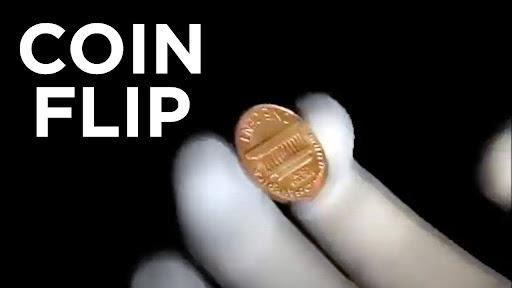Notifications

8 minutes, 21 seconds
-18 Views 0 Comments 0 Likes 0 Reviews

Making decisions can be challenging, especially when both options seem equally good—or bad. That's where flip a coin comes in handy. From ancient times to the modern world, the simple act of tossing a coin has been a quick and reliable way to settle disputes, make choices, or add excitement to games.
A coin flip, or coin toss, is a process where a coin is tossed into the air and its outcome—heads or tails—is observed to make a decision. The simplicity and fairness of a coin flip make it one of the most popular methods for resolving uncertainty.
Visit CoinFlip Webpage: https://coinflip.us.com/
The outcome of the coin toss depends on which side faces up when the coin lands. It’s a 50/50 chance Heads or Tails, making it the simplest form of random decision-making.
The practice of flip a coin dates back thousands of years. Ancient civilizations like the Romans used a game called "navia aut caput," meaning "ship or head," where coins featured a ship on one side and a head on the other.
Over time, this practice evolved into the modern concept of "heads or tails." Today, Coin Flip is a universal method for: https://coinflip.us.org/
Flip a coin is more than just a fun activity—it has psychological benefits as well:
If you’ve never flip a coin before, here’s a simple guide:
In today’s digital world, flipping a physical coin isn’t always practical. That’s where online coin flip tools come in. These tools simulate the randomness of a coin toss with a single click.
Flip a coin isn’t just for fun; it plays a critical role in various scenarios:
Coin flip are often used in sports like football, cricket, and tennis to determine which team starts the game or chooses their side.
From board games to party games, a heads or tails resolves disputes and decides turns.
Whether it's choosing dinner plans or settling a debate, flipping a coin makes daily decisions easier.
In theory, flip a coin gives each side a 50/50 chance. However, factors like the coin’s weight, spin, and landing surface can slightly influence the outcome. For example:
For completely fair results, digital tools often provide better accuracy.
The odds are approximately 50% for each side, assuming the coin is fair and the toss is random.
Yes, most online coin flip tools are designed to simulate randomness, making them just as reliable as a physical coin toss.
"Heads or tails" refers to the two sides of a coin. Heads usually feature a face or emblem, while tails have an alternate design.
Sometimes, making a decision isn’t about logic—it’s about trusting fate. Flipping a coin removes stress from decision-making, offering a simple and effective solution to life’s uncertainties. Whether you’re deciding who pays for dinner or determining the next player in a game, the coin flip is a timeless and universal tool.
The next time you’re faced with a tough choice, remember the power of a simple coin flip. It’s quick, fair, and accessible—even digitally. Whether you’re using a physical coin or an online coin flip tool, the excitement of heads or tails never fades.

